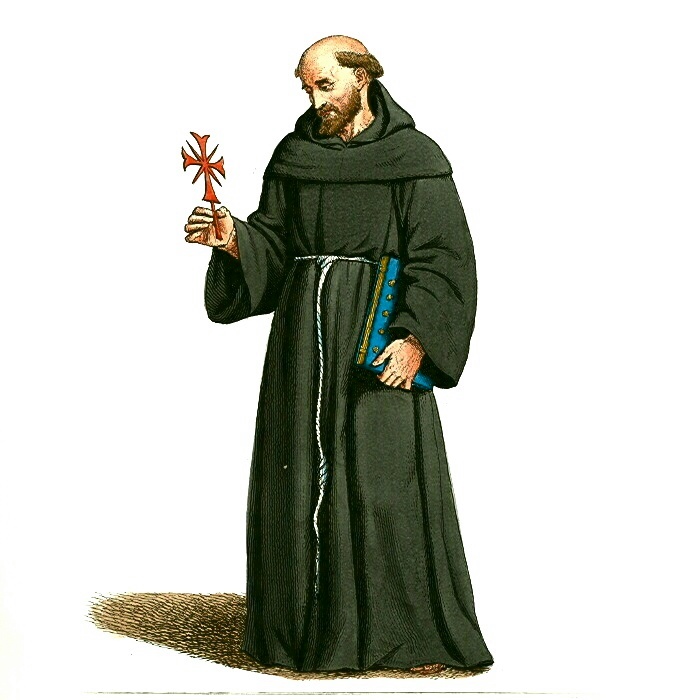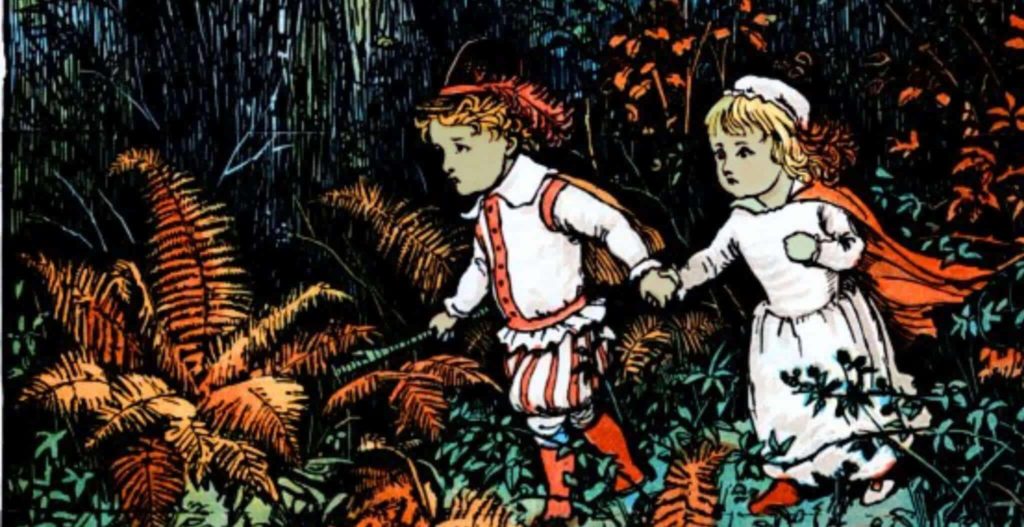Last updated on July 29th, 2022 at 08:46 pm
In the medieval period, the Roman Catholic Church was one of Europe’s central pillars of society. There was no part of life that the church didn’t extend.
Unlike today, where an increasingly small number of people attend their local church, everyone would attend on Sunday. Moreover, all farmers, who made up the bulk of most communities, had to pay the local church tithe—this tithe provided for the upkeep of the priest. Excess was sent to the bishop.
Beyond this, huge amounts of life, from birth to marriage to death, involved the local priest in one form or another. Here we explore the priest’s role in medieval society more closely.

Becoming a Medieval Priest
Firstly, we should be aware that people did not exactly become priests in the medieval period as they do today. A modern priest within the Roman Catholic Church is generally someone with deep religious belief who feels they have a vocation to serve god. They enter a seminary to train for many years, reading scripture and learning theological disputation.
After this, they are assigned to a parish to serve as the local priest. In medieval times it was very different. Some priests had formal training, whether in a monastery or seminary, but very often, priests were entirely untrained.
Indeed because the church was wealthy and powerful, people saw the priesthood as a career choice.
The local lord might also bestow the position of a priest as a form of patronage. In some parts of Europe, such as Ireland, the position of a priest in an area was effectively inherited by certain kin groups.
This dispensing of religious offices as patronage continued at all levels. For example, the early sixteenth-century Pope Leo X, a member of the powerful Medici family of Florence, was made a cardinal of the church when he was just 13 years old. Thus, entering the priesthood was not exactly a matter of being qualified.
The Role of the Medieval Priest
The role of the priest was huge and reflected the centrality of the wider church to society. The most important duty he performed was regularly celebrating the Mass in his parish on Sundays.
He dispensed the Eucharist, the most important of the seven sacraments. But he also oversaw the other six sacraments. For instance, when his parishioners had children, he performed their baptism. He also christened infants and, later in life, confirmed teenagers. They would even hold mass at local nunneries.
If a couple wished to marry, the priest was not just responsible for performing the marriage ceremony but often for questioning the couple and ensuring that they were allowed to marry in the eyes of the church.
Finally, at the end of their lives, the parish priest was responsible for giving people the last rites and overseeing their funerals. But beyond these duties, which are still staples of the Roman Catholic priesthood today, priests performed many other duties during the Middle Ages.
For instance, priests had a large role to play in the finalizing and executing of wills, and rather than being deposited with a law firm, as they are today, these were often processed through the church during the Middle Ages.
The church was also hugely involved in tax collection, both its own ecclesiastical taxes and spiritual dues collected by the church and given to the crown government in a given region.
Thus, the local priest was a form of tax collector as well. Similarly, the local priest was often responsible for dispensing charity and poor relief in the parish in conjunction with the local monasteries.
Finally, because the church reached into every part of people’s lives, the priest also had a role in the moral oversight of the community. This could extend into attempts to identify local witches or root out heresy if it was detected in the community. The role of the priest was immense in medieval times.
The Role of Latin in the Middle Ages
Of course, the lack of formal training created a significant problem. In the Middle Ages, the Mass was celebrated across Europe almost entirely in Latin rather than the local language.
If one went to Rome, Paris, or London, they could be assured that the local priest, bishop, or archbishop here was a fairly well-educated figure, one who was well-versed in Latin.
But out in the wilds of Ireland, northern England, much of Poland, Hungary, or the more isolated rural parts of almost every country in Europe, one would have found priests who did not really understand Latin.
Effectively they had just learned to recite the Latin passages necessary for the Mass. They could get away with this because, in most instances, none of their parishioners understood Latin.
This created the ludicrous situation where people attended Mass, and neither the priest nor the parishioners knew what was being said meant.
A Corrupt Priesthood During the Medieval Ages
Much of the previous details point towards the priesthood and the wider church not exactly being upstanding pillars of society.
This impression is confirmed when we examine how corrupt the priesthood was. Rules were broken everywhere. It was and still is a stricture of Roman Catholicism that priests should be celibate and not marry. But in practice, this was widely ignored.
Many priests had mistresses, while some were effectively married and settled with a wife and children in all but name. This was less the case in the High Middle Ages, but it was widespread by the late medieval period. For example, Alexander VI, the Pope between 1492 and 1503, had several children with his mistresses, and these were given prominent positions within the Papal State.
Across Europe, it was also increasingly common for parish priests to obtain appointments to multiple parishes. This ensured that they acquired a higher income through the ecclesiastical taxes due to the church in these parishes, but it meant they either had to split their time between these parishes or else ignore some of them altogether.
This left some communities without a priest or one who only showed up every few weeks to celebrate the Mass. Others still appointed friends or family members to important positions within their area.
Overall, by the late medieval period, the power of the Roman Catholic Church had resulted in an increasingly corrupt priesthood.
The Protestant Reformation Changed the Priesthood
Eventually, the corrupt nature of the priesthood in late medieval Europe could not be ignored anymore.
Already in the fourteenth and fifteenth centuries, reformers were emerging, such as John Wycliffe in England and Jan Hus in Bohemia in what is now the Czech Republic, who argued that the church needed a drastic overhaul.
One of their major criticisms was that priests needed to be trained better. Another individual who became convinced of the need for reform after he visited Rome in 1510 was a German theologian named Martin Luther.
Back in Germany, a few years later, he inadvertently started the Protestant Reformation when he penned a series of 95 Theses queried the church’s direction.
In the years that followed, this ballooned into the Protestant Reformation as reformers across Western and Central Europe began critiquing every aspect of the Roman Catholic Church. Central to this was the training of priests and how they lived.
In time the Reformation would lead to a significant improvement in the methods used to train priests. At the same time, many Protestant churches began allowing priests, who they termed ministers, to marry and raise families without facing censure from the church authorities.
Thus, the sixteenth century transformed how priests lived and operated in Europe.

